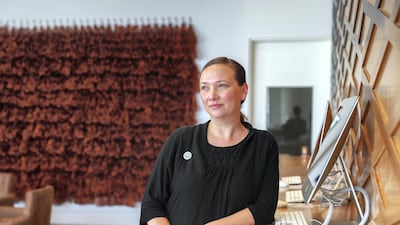Almost one in 10 Emirati women are smokers – but only a third of those admit to lighting up, a new study has found.
The UAE Healthy Future Study found that just 3 per cent of Emirati women and 36 per cent of men admitted to using tobacco, through cigarettes, shisha or medwakh (a small smoking pipe).
But when the group of almost 400 participants were tested for cotinine, a substance produced when nicotine is metabolised, 9 per cent of women and 42 per cent of men gave a positive result.
It is the first time that self-reported smoking rates have been compared to biochemical data in the region.
The results are especially concerning to researchers, because they suggest that smoking rates among young Emiratis are likely to be higher than among their parents, putting the country at odds with many developed nations, where the number of young people taking up the habit has fallen.
Earlier reports indicated that the smoking rate among UAE nationals was as low as 0.8 per cent in women and 24 per cent in men.
“It was kind of interesting that, for both men and women, there was a bit of a discrepancy between the self-reported rates and what we found biochemically,” said Andrea Leinberger-Jabari, assistant director of tobacco research at New York University Abu Dhabi and the co-lead author of a scientific paper reporting the results.
She said the way in which smoking was not considered socially or culturally acceptable, particularly among women, helped to explain why some people who smoke chose not to reveal this information.
The actual smoking rates could even be higher still than those indicated by the cotinine test, because if people only smoke occasionally, they could sometimes produce a negative result.
The average age of participants in the study was about 30, said another of the paper’s authors, Dr Raghib Ali, an associate professor and director of the Public Health Research Centre at NYU Abu Dhabi.
___________________
Read more:
UAE smoking poll: only one in four have changed their habit since introduction of 'sin tax'
Doctors call for 'minimum pricing' plan for tobacco after introduction of UAE's sin tax
Almost 3,000 smoking-related deaths a year in UAE, report shows
__________________
As a result, based on the study's findings, he said that smoking rates were "likely to be higher in younger men than older men, and younger women rather than older women".
“It is more worrying in many ways because the adverse health effects are worse the longer you smoke,” he said.
“If young people are smoking more than their parents today, it’s the opposite to what’s happening in western countries, where smoking rates have fallen.”
The overall smoking rates found among those surveyed were, he said, “very worrying” – particularly in light of the high levels of diabetes in the UAE.
“Smoking regularly reduces your life expectancy by 10 years in western populations. In the UAE, it could be higher, because of the high rates of diabetes. The combination of smoking and diabetes is extremely bad for your health,” he said.
The study found that the median (middle) age for starting to smoke was just 17.5 years old.
Previous research has, likewise, indicated that smoking is being taken up at a young age in the Emirates, with a UAE University study presented at a conference last year suggesting that 8.5 per cent of 12- to 14-year-old Arab children in the country smoked.
Research for the latest study was carried out before last year’s introduction of a 100 per cent tobacco tax in the country. Ms Leinberger-Jabari said that it would be interesting to see if there had been any change in smoking rates since the tax’s launch.
“Some of the policy measures are really great for tobacco control, but there’s still a lot of work to be done as we move towards more measures to curb tobacco use among young people, hopefully that will lead to declines,” she said.
The paper was produced as part of a pilot study for the UAE Healthy Future Study, which aims to recruit 20,000 Emirati volunteers and analyse their health over the long term to better understand risk factors for non-communicable conditions, especially diabetes and heart disease. These are present at high rates here despite health care being of a high standard.
“Smoking is the number one risk factor for premature death, so it’s essential to have accurate data,” said Dr Ali.
The researchers will be carrying out more research on tobacco use in the UAE and will be looking at, among other things, environmental exposure to tobacco smoke.
The paper, which is entitled Patterns of Tobacco Use in the United Arab Emirates Healthy Future (UAEHFS) Pilot Study and is published in the journal PLOS One, is authored by a total of 26 researchers.


